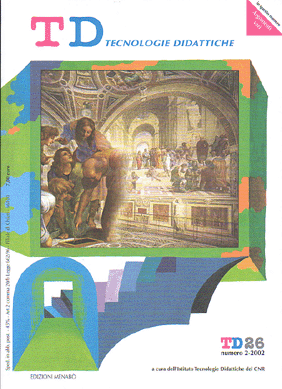Teaching technology: a pilot experience with deaf students
Main Article Content
Abstract
Article Details
Section
Authors who publish with this journal agree to the following terms:
- Authors retain copyright and grant the journal right of first publication with the work simultaneously licensed under a Creative Commons CC BY 4.0 Attribution 4.0 International License.
- Authors are able to enter into separate, additional contractual arrangements for the non-exclusive distribution of the journal's published version of the work (e.g., post it to an institutional repository or publish it in a book), with an acknowledgement of its initial publication in this journal.
- Authors are permitted and encouraged to post their work online (e.g., in institutional repositories or on their website) prior to and during the submission process, as it can lead to productive exchanges, as well as earlier and greater citation of published work (See The Effect of Open Access)
References
Baker S., Baker K. (1997), Educating children who are Deaf or Hard of Hearing: Bilingual- Bicultural Education, ERIC Digest, August 1997. http://ericec.org/ digests/e553.html
Carlson B.O. (2001), Shared Texts, Negotiated Meanings: Perspectives On the Computer Mediated Communication of Postsecondary Students Who are Deaf, Instructional Technology and Education of the Deaf, New York, giugno 2001. http://www.rit.edu/ ~techsym
Costa A. (a cura di) (2000), Cliccando Cliccando. Tecnologie multimediali per l’handicap, Provveditorato agli Studi di Bologna - Progetto Marconi. http://provveditorato. scuole.bo.it/cliccando/
Holcomb T., Peyton J. (1992), ESL Literacy for a Linguistic Minority: The Deaf Experience, ERIC Digest, July 1992. http://www.ed.gov/ databases/ERIC_Digests /ed353861.html
Kennedy M. (2001), A study of current models of online learning for Deaf learners, Instructional Technology and Education of the Deaf, New York, giugno 2001. http://www.rit.edu/ ~techsym
Loeterman M., Paul P. V. (2001), Cornerstones Approach to Literacy Development, Instructional Technology and Education of the Deaf, New York, giugno 2001. http://www.rit.edu/ ~techsym
Lorenzo G. (2000), RIT professor pioneers distance learning courses to benefit deaf and hard-ofhearing students. Disponibile on-line all’indirizzo http://www.edpath. com/mallory.htm
Mackall P. (2001), Technology in education can empower deaf students. A teacher training initiative, Instructional Technology and Education of the Deaf, New York, giugno 2001. http://www.rit.edu/ ~techsym
Marschark M. (2001), Language development in children who are deaf: A research synthesis, National Association of State Directors of Special Education, Alexandria. www.nasdse.org/ FORUM/language_ development.pdf
Massoni P., Maragna S. (1997), Manuale di logopedia per bambini sordi, Franco Angeli, Milano.
Stimamiglio L. (1991), Modalità di ricorso ai linguaggi extraverbali per aiutare lo studente a superare le difficoltà che incontra nella lettura, Atti del 37° Convegno Nazionale dell’A.I.E.S. Sassari, 1-6 settembre 1991.
Stokoe W. C. (1993), Sign Language Structure. An Outline of the Visual Communication System Of the American Deaf, Linstok Press, Silver Spring.
Thompson J. (2001), Online Learning: A Learning Medium for Everyone, Instructional Technology and Education of the Deaf, New York. http://www.rit.edu/ ~techsym
Tyler R.S. (1993), Cochlear Implants and the Deaf Culture, American Journal of Audiology, 2, pp.26-32.

